Engine code $7E9 and $7E8 are two of the most common fault codes that arise in modern vehicles. As engine systems become more complex, it is important to understand what these fault codes mean and how they can be rectified. This article aims to provide an overview of both of these codes and a guide on how to best address them.
The majority of cars manufactured after 1996 have been equipped with On-Board Diagnostics II (OBDII). This system monitors the performance of various components within the vehicle’s engine such as emissions levels, fuel efficiency, ignition timing, temperature control and other factors. The OBDII system is designed to alert drivers when it detects any irregularities or faults through displaying error codes like $7E9 and $7E8 on dashboard displays.
As many potential issues can lead to either code being displayed, this article will explore the different possibilities behind each code while also providing advice on resolving any detected problems quickly and safely. Ultimately readers should come away with a better understanding not only of why their car has encountered one or both of these errors but also how they can go about fixing them without compromising their safety or vehicle reliability.
What Are $7e9 And $7e8 Engine Codes?
The $7E9 and $7E8 engine codes are diagnostic trouble codes (DTCs) that indicate a malfunction in the vehicle’s powertrain. The codes refer to errors detected by the Engine Control Module (ECM), which is responsible for managing various components of the car’s engine, such as fuel injection, ignition timing and air-to-fuel ratio. When these codes appear on the dashboard or are retrieved during an OBD scan, they can be used to diagnose any problems with the engine system.
A faulty ECM can cause a wide range of issues, including rough idle, poor acceleration, stalling and reduced fuel economy. In some cases it may also trigger emissions warnings due to increased exhaust gas production from incomplete combustion. Other symptoms include a misfiring spark plug or injector, hard starting and difficulty maintaining speed when accelerating.
Diagnosing $7E9 and $7E8 DTCs requires professional expertise since there could be multiple causes of their appearance. Common sources of error include failing sensors, wiring harnesses or electrical connections that have become loose over time. In addition, incorrect oil levels or contaminated fuel filters can create obstructions in the system which will ultimately result in failure or decreased performance. A qualified technician should be able to identify what is causing the problem and repair it accordingly.
Diagnostic Trouble Code (Dtc) Definitions
Diagnosing and troubleshooting vehicle issues requires a proper understanding of Diagnostic Trouble Codes (DTC). These codes are generated by the On-board Diagnostics II (OBDII) system, an electronic monitoring system that can detect engine faults. The most common fault codes related to a $7E9 and $7E8 error code are:
- P0300 – random misfire detected
- P0304 – cylinder 4 misfire detected
- P0130 – O2 sensor circuit malfunction
- P0420 – catalyst efficiency below threshold
When one of these DTCs is set in the ECU memory, it means that there is an issue with the corresponding component or system on your vehicle. To accurately diagnose and repair this type of problem, you must have access to detailed diagnostic information about what caused the DTC to be set in the first place. This includes data from live tests performed while the vehicle is running as well as freeze frame data which provides a snapshot of how the engine was performing when the fault occurred. Additionally, it’s important to use quality components since faulty parts can cause further damage if they’re not replaced correctly.
Safety should always be top priority when dealing with automotive systems; make sure all necessary precautions are taken before servicing any part or component on your car including protective clothing, safety glasses, tools designed for specific tasks, etc. With correct diagnosis and skilled repair work you’ll get back on track quickly and safely without breaking the bank!
Symptoms Of A Faulty Engine Code
The e9 and $7e8 engine codes are common fault codes that can be found in most car engines. When these error codes appear, it is usually indicative of an issue with the engine or its components. In order to diagnose and fix the problem, it is important to understand the symptoms associated with a faulty engine code.
The first symptom of a faulty engine code is decreased performance from the vehicle. This could include slower acceleration and reduced power output when driving. Another symptom may be strange noises coming from the engine compartment such as knocking or tapping sounds caused by loose parts like valves or rods due to wear over time. Additionally, there may be issues with starting up the car or loss of fuel economy due to bad connections in the ECU (Engine Control Unit).
| Symptom | Potential Cause | Solution |
|---|---|---|
| Decreased performance | Faulty Engine Components/Connections | Repair/Replace Parts/ Connections |
| Strange Noises | Worn Out Valves/Rods | Replace Valves/ Rods |
| Issues Starting Up Car | Bad Connection in ECU (Engine Control Unit) | Re-connect wiring harness & plugs on ECU (Engine Control Unit) |
To identify what type of fault has occurred, a diagnostic scan tool should be used which will pull information related to any errors stored within your vehicles onboard computer system. Depending on what type of fault you have encountered, repairs may range from simple fixes such as tightening bolts or replacing spark plugs all the way up to more extreme scenarios where entire components need to be replaced such as an engine rod or cylinder head gasket. It’s always best practice to take your car into a certified mechanic if you encounter any issue with your vehicle’s engine so they can properly assess and diagnose the issue before attempting any repair work themselves.
By understanding some of these symptoms associated with a faulty engine code, drivers can better prepare for potential problems with their vehicle’s performance. By staying informed about possible solutions beforehand, motorists can save money and time by being proactive rather than reactive in addressing any potential mechanical issues that arise from their cars’ engines.
Causes Of Dtcs $7e9 And $7e8
Transitioning from the previous section, this subsequent section will focus on analyzing the causes of Diagnostic Trouble Codes (DTCs) $7E9 and $7E8. These codes often appear in vehicles equipped with an On-Board Diagnostics II (OBDII) scanner. The data stream generated by such scanners can help isolate any underlying issues that may be triggering these fault codes.
The most common cause for DTCs $7E9 and $7E8 is a faulty electronic control module (ECM). An ECM regulates various functions within the engine, including air/fuel mixture, ignition timing, fuel injector pulse width, etc. If it fails to perform its intended tasks due to malfunction or poor connections, it can lead to errors being reported through the OBDII scanner’s data stream. Another potential source of problems could be wiring harnesses related to sensors or actuators that are not working properly or are damaged in some way.
In addition to hardware malfunctions, software glitches can also induce code $7E9 and $7E8 faults. This type of issue occurs when bad programming interferes with proper communication between components connected to the vehicle’s network system via CAN bus technology – Control Area Network protocol used in automotive applications among other things. To accurately diagnose these types of faults requires specialized diagnostic tools capable of reading out detailed information about each component involved in order to identify where exactly the problem lies.
Therefore, it is important to understand what possible sources could be causing DTCs $7E9 and $7E8 before attempting repairs; otherwise time spent trying different solutions without success might result in aggravation as well as unnecessary expenses. Using an OBDII scanner combined with additional equipment designed specifically for diagnosing complex systems can allow technicians to quickly pinpoint trouble areas so they can efficiently fix them before further damage ensues.
Obd-Ii Scanner Tool For Diagnosis
When it comes to diagnosing the root cause of engine code E9 and $7E8, an OBD-II Scanner Tool is a must. This tool provides access to diagnostic trouble codes (DTC) stored in the vehicle’s computer system. These DTCs can provide important information about potential issues that may be causing the error message. Furthermore, this type of scanner also allows for live data monitoring, enabling mechanics and car owners to detect any changes or irregularities within the systems being monitored.
The OBD-II Scanner Tool helps guide users through a series of steps they should take when attempting to diagnose common fault codes such as those associated with E9 and $7E8. This includes gathering detailed information on all components related to these codes, checking wiring connections, examining fuel delivery systems, inspecting emissions control systems and testing various other sensors. It is essential for users to use the highest quality OBD scanner tools available so that accurate readings are obtained quickly and accurately.
In order to ensure safety while using an OBD-II Scanner Tool, it is recommended that users read all instructions thoroughly prior to usage; always follow manufacturer guidelines closely; wear appropriate personal protective equipment including gloves when handling electronic components; keep work areas clean and well organized; and finally disconnect power sources before commencing repairs or maintenance operations. With these simple precautions taken into consideration, an OBD-II Scanner Tool can prove invaluable in helping user identify the underlying source of their engine codes effectively and efficiently.
Vehicle Computer System Error Check
Vehicle computer systems are complex and require regular maintenance to ensure optimal performance. One way of determining if a system is malfunctioning is by monitoring the engine light, or check engine light. When this light illuminates, it indicates that there may be an issue with one or more vehicle components. The specific codes associated with the illumination can help identify the issue and allow for corrective action to be taken.
The e9 and $7e8 error codes are common fault codes often seen when the check engine light activates in vehicles equipped with OBD-II diagnostic systems. These two codes indicate problems related to misfiring cylinders within the vehicle’s powertrain system. In most cases, these errors result from failed spark plugs, ignition coils, fuel injectors, oxygen sensors, or other components of the powertrain system.
To diagnose and rectify such issues requires specialised equipment not typically found in a home garage. Therefore, it is recommended that any vehicle displaying these warning lights should have its diagnostics run by a certified service centre as soon as possible; failure to do so could lead to further damage occurring which would incur additional costs to repair. Proper diagnosis will also ensure safe operation of the vehicle going forward.
Ignition Coil Problems
The ignition coil is an important part of the vehicle’s electrical system. It produces the high voltage that allows spark to be produced by the spark plugs, which ignites the air/fuel mixture in each cylinder. A faulty or malfunctioning ignition coil can cause a number of problems with your engine such as starting difficulty, stalling and misfires.
There are several things that you should look out for when diagnosing a problem related to the ignition coils:
- Check for any signs of abnormal wear or damage on the plug wires
- Inspect all components connected to the coils (spark plugs, knock sensors)
- Verify fuel cap is secure and not leaking
- Look for corrosion around connectors associated with coils
As always, it’s best practice to follow manufacturer guidelines found in service manuals when servicing ignition coils and other parts of the electrical system- this will help ensure proper diagnosis and resolution of potential issues. Additionally, if you experience any difficulties while performing maintenance on these components, contact an experienced technician who can assist you in resolving them quickly and safely!
Battery Issues
Battery issues are a common cause for concern when it comes to the e9 and $7e8 engine code. Many of these problems can be attributed to inadequate maintenance, such as lack of regular battery checks or allowing corrosion on the terminals.
The most important factor in ensuring that your vehicle runs well is having a healthy battery system. A malfunctioning battery may lead to other components not working correctly, including the catalytic converter and evaporative emission control system (EVAP). Poorly maintained batteries can also reduce fuel economy due to higher electrical loads.
Table 1: Common Battery Issues
| Issue | Cause/Solution |
|---|---|
| Low Voltage | Faulty alternator or defective diode pack; have these parts replaced by a professional mechanic if necessary. |
| Corroded Terminals | Clean with baking soda and water solution; use dielectric grease after cleaning. |
| Dead Cell | Check electrolyte levels and recharge if needed, replace the entire battery if necessary. |
It is recommended that you check your car’s battery regularly to ensure all connections are secure and there is no visible damage to any wires or cables. Additionally, make sure that all fluid levels are at an acceptable level and top them off accordingly if they’re low. If you notice any signs of wear or tear, take your vehicle into a certified service center as soon as possible for repairs before further damage occurs.
To prevent future battery-related issues from occurring, consider investing in a high quality charger that will keep your car running smoothly for years to come without needing extensive maintenance work done on it. Furthermore, always follow manufacturer guidelines regarding how often you should change out your old battery for new ones so that the overall performance of your vehicle remains optimal over time.
Fuel Injector Functionality Test
Fuel injector functionality is an important part of the engine powertrain. It plays a major role in controlling the fuel-air mixture, which affects engine performance and fuel economy. The purpose of testing the injectors is to ensure they are functioning correctly. This can be done by connecting a scan tool to the transmission control module (TCM) and running a series of tests that check for any irregularities or faults in their operation.
The most common type of test used is called an “injector balance test”. During this test, each individual injector is monitored while it’s operating at different speeds and pressures, giving a clear indication as to whether they are working properly or not. If one or more of the injectors shows signs of trouble, then further diagnostic steps may need to be taken to identify and repair the issue.
In addition to balance tests, other methods such as voltage drop tests and cylinder leak down tests can also help diagnose potential problems with fuel injectors. These types of diagnostics allow technicians to pinpoint exactly where there might be issues so that repairs can be made quickly and efficiently. Ultimately, ensuring that all fuel injectors on your vehicle are operating optimally will enable you to enjoy better engine performance and improved fuel efficiency over time.
Intake Or Exhaust Manifold Leaks
When it comes to the e9 and $7e8 engine code, common fault codes often indicate a problem with either the intake or exhaust manifold. A transmission powertrain general error code may be present when there is an issue related to one of these components. If this occurs, it is important that the vehicle owner take their car in for servicing as soon as possible.
The intake and exhaust manifolds are responsible for controlling air flow into and out of the engine. They allow combustion gases from the cylinders to exit safely outside of the engine compartment, while providing fresh oxygenated air for fuel injection systems during operation. When there is an issue with either component, which can include cracks or holes around seams, leaks can occur and result in reduced performance. This will lead to poor drivability, increased emissions levels, and decreased fuel economy due to incorrect air-fuel ratios being supplied to the cylinders.
It’s essential that any problems relating to intake or exhaust manifold leaks are addressed quickly by a qualified mechanic who understands how important these components are for safe driving conditions. There are numerous diagnostic steps available such as visual inspections and smoke tests that technicians can use to help identify issues before repairs begin. Taking care of these types of maintenance items promptly helps ensure optimum safety on our roads today.
Spark Plug Malfunctioning
When a vehicle is equipped with an E9 and $7E8 engine code, it can suffer from spark plug malfunctioning. Spark plugs are important components of the ignition system as they provide the electrical current to ignite fuel in the engine’s combustion chamber. Malfunctioning spark plugs can cause a variety of issues such as misfires, hard starting or stalling on acceleration. One of the main causes for this issue is faulty fuel vapor lines that lead to improper functioning of the emission control system.
It is essential to have these problems addressed quickly and accurately in order to ensure safe driving conditions. Inspecting each individual part within the emission control system can help diagnose any possible malfunctions within the system itself. The technician should also check all wiring connections between sensors and other parts such as spark plugs and coils, which may be damaged due to corrosion or mechanical wear-and-tear over time.
Using quality replacement parts when repairing spark plug issues will help minimize future complications and restore proper operation to the overall emission control system. This will not only improve engine performance but also reduce emissions output, ensuring that your vehicle meets local regulations for pollution standards. Additionally, performing regular maintenance checks including changing air filters, oil changes and checking fluid levels can extend the life span of your car’s systems by preventing further damage from occurring in the first place.
Camshaft Or Crankshaft Sensor Error
The malfunctioning of the spark plug can lead to a variety of engine problems and may even be indicative of a deeper issue. In fact, it is often linked with two specific codes, e9 and $7e8, which are both related to camshaft or crankshaft sensor errors. It is important to understand what these actual codes mean in order to properly address the underlying problem.
When deciphering an error code like e9 or $7e8 on modern vehicles, they usually indicate that there has been an issue detected within either the transmission system or one of its components – such as the camshaft or crankshaft sensors. These particular sensors measure various parameters from inside the engine, allowing for accurate feedback about performance levels. If any abnormalities are found during their operation then this will result in further issues being experienced by the vehicle. Depending on how severe the abnormality is, it could cause stalling or reduced fuel economy among other things.
One way to check if this type of error code is present is through diagnostic testing carried out by a professional technician at a service center. This typically involves connecting specialized tools and software designed to detect any faults within the transmission system itself. The results should provide information regarding what needs to be done next in order to resolve the problem correctly without causing additional damage to the engine’s internal components. Additionally, regular maintenance checks should also be conducted regularly so that potential issues can be identified before they become major ones down the line.
Overall, understanding what each engine code means is essential when attempting to diagnose and fix problems associated with them. In particular, e9 and $7e8 signal more serious issues relating directly to either camshafts or crankshafts sensors respectively – requiring careful attention in order keep your car running optimally over time
Repair Options And Cost Considerations
The E9 and $7E8 engine codes are common fault codes that can indicate a variety of issues. Depending on the type of fault code, repair options range from simple to complex, as well as costly.
When considering repair options for an E9 or $7E8 fault code, it is important to first identify the specific issue causing the problem. If the culprit is a loose gas cap or other minor issue, then replacing or tightening it should remedy the situation at minimal cost. However, if more serious damage has occurred in any part of the system due to corrosion or wear-and-tear, expensive repairs may be necessary depending on what needs to be replaced.
It is also important to take into account labor costs when assessing total repair expenses. In some cases, just purchasing parts will not resolve a mechanical issue; specialized skills may need to be contracted out by professionals who charge separately for their services. Therefore, individuals looking for an accurate estimate of repair costs should factor in both parts and labor fees when making decisions about how best to approach fixing an E9 or $7E8 engine code problem.
Maintenance Tips To Avoid Future Problems
Regular maintenance of the e9 and $7e8 engine is essential to avoiding costly repairs. Fuel air intake codes are a common source of problems for these engines, often resulting in fuel economy issues or difficulty starting. To ensure optimal performance from the vehicle, it is recommended that fuel filters be replaced every 12 months or 15,000 miles (whichever comes first). In addition, spark plugs should be changed at least twice a year – regardless of mileage – as they can wear out over time due to heat buildup and carbon deposits.
If there’s an issue with your engine’s idle speed, it could indicate clogged injectors or vacuum leaks which must be addressed immediately as they can cause further damage if left unchecked. Car owners should also take note of any noticeable changes in their car’s performance such as decreased acceleration or power output; this could signal dirty throttle body components and other sensors requiring attention.
It is important to keep up with scheduled service intervals for oil changes, fluid level checks and inspections so that minor issues do not become major repair jobs down the line. Regularly checking all vital parts of your engine will help prevent expensive surprises when you’re on the road. Taking preventive action now will go a long way toward keeping your car running smoothly and safely into the future.
Professional Assistance And Service
Professional assistance and service is paramount when dealing with engine code e9 and $7e8. While it may be tempting to try to tackle the problem on one’s own, getting professional help from experienced mechanics can save time, money, and stress in the long run.
When seeking out a mechanic for such an issue, it’s important to do one’s research. Ask friends or family for referrals of trustworthy professionals who have experience with similar issues. Read reviews online to get an idea of what others have said about their experiences working with them. Additionally, inquire about warranty coverage; this will provide peace of mind in case something goes wrong after servicing has been completed.
Having access to a reliable professional helps ensure that any potential fault codes are identified quickly and accurately while they can still be addressed before larger problems arise. As soon as a code appears, seeking out knowledgeable assistance should be top priority. Doing so could prevent costly repairs down the road and keep vehicles running smoothly for years to come.
Frequently Asked Questions
How Long Will It Take To Repair A $7e9 Or $7e8 Engine Code?
Repairing a $7E9 or $7E8 engine code can vary greatly in terms of time and cost. The extent of the repair required, as well as any underlying issues that may be present, will determine how long it takes to complete the work. Some variables to consider include:
- Accessibility of parts – If parts need to be sourced from outside vendors, this can add additional days onto the repair timeline.
- Complexity of repairs – More complex repairs take longer than simpler ones due to added labor costs associated with diagnosis and correction.
- Knowledge level of technician – A more experienced technician is likely able to perform the repairs faster than an inexperienced one.
- Availability of tools and equipment – Having the right tools for the job makes a big difference when it comes to completing repairs quickly and efficiently.
- Quality of service provider – Choosing a service provider with experience in repairing similar codes could reduce overall turnaround time.
When attempting to diagnose and fix these types of faults, it’s important to have access to reliable diagnostic information so that technicians are able to accurately identify and address problems quickly without having to waste valuable time researching potential causes on their own. In addition, obtaining OEM-approved components is critical for ensuring quality results over the long term, even if they come at a higher initial cost up front. Lastly, using high-quality aftermarket components can also provide good value if done correctly since they often come at lower prices compared to OEM parts but still offer comparable performance levels.
Taking all these factors into account, those seeking out engine code repairs should expect some degree of variability in price and total repair times depending on the particular circumstances involved with each individual case. It is therefore recommended that prospective customers do their research ahead of time by comparing different providers based on customer reviews and other criteria before committing to any specific course of action in order to ensure they get optimal value for their money while also minimizing downtime as much as possible.
What Are The Potential Risks Of Not Repairing A $7e9 Or $7e8 Engine Code?
Not repairing a $7e9 or $7e8 engine code can potentially have serious consequences. Depending on the severity of the fault, it may be necessary to make repairs in order to ensure that your vehicle is safe and reliable. Understanding the risks associated with not resolving this issue can help you make an informed decision about how best to proceed.
Failing to repair a problem related to these codes could cause further damage to other components within the engine. If left unresolved, chunks of debris from worn parts could contaminate other parts of the system, leading to high levels of friction between moving components which will reduce performance and efficiency. In extreme cases, this could lead to catastrophic failure due to overheating or excessive wear and tear throughout the entire engine system.
It is also important to consider cost implications when deciding whether or not to fix a $7e9 or $7e8 engine code issue. The cost of making repairs now as opposed to later may be significantly different depending on what needs fixing and at what stage in its lifecycle any potential problems exist. Additionally, if there are signs of imminent breakdowns such as leaking oil, misfiring cylinders etc., then ignoring them for too long may render certain components unusable requiring more extensive work resulting in higher costs down the line.
Taking all factors into consideration, it’s clear that leaving unchecked faults related to $7E9 or $7E8 engine codes could prove costly both financially and safety-wise over time should they go unresolved for too long. Knowing precisely what’s wrong before attempting any repairs is essential; however having access either directly through diagnostic tools or through qualified professionals can help identify issues quickly so appropriate action can be taken without delay.
Are There Any Specific Maintenance Tips To Prevent $7e9 Or $7e8 Engine Code Issues?
Maintaining a vehicle is essential in order to prevent any potential issues with the engine code. This includes understanding the risks of not repairing $7e9 or $7e8 engine codes and knowing how to address them effectively. In this article, we will be discussing specific maintenance tips for preventing $7e9 or $7e8 engine code issues.
In order to ensure that your car remains safe on the road, it is important to make sure that all necessary repairs are made when an issue arises. If you do not repair these codes, then there can be several risks involved such as decreased fuel economy, increased emissions output, and potentially costly damage to other components of the vehicle. The following are some tips for avoiding these types of problems:
- Regularly check fluid levels: Making sure that oil, coolant and transmission fluid levels remain consistent will help keep your car running smoothly and reduce chances of further complications arising from low fluids.
- Keep up with scheduled maintenance: Keeping up with regular service intervals can help detect early signs of trouble before they become more serious issues down the line.
- Inspect hoses and belts: Checking for cracked or worn hoses and belts can save you from possible breakdowns later on by ensuring that everything runs properly without risk of failure due to worn parts.
- Consider investing in diagnostic tools: Investing in quality diagnostic tools can help diagnose any underlying issues with ease while also providing helpful information regarding diagnosis times, component locations and more.
By taking proactive steps towards addressing potential problems associated with $7e9 or 7e8 engine codes, owners can rest assured knowing their cars are functioning optimally and safely at all times. Performing routine checks on these components regularly ensures that any existing issue is addressed quickly before it escalates into something worse. Ultimately, being prepared with proper knowledge about preventive measures helps drivers proactively maintain their vehicles so they may enjoy years of reliable performance out of them.
What Are The Most Common Causes Of $7e9 And $7e8 Engine Codes?
The current H2 question is what are the most common causes of $7E9 and $7E8 engine codes? These fault codes generally indicate an issue with the exhaust gas recirculation (EGR) system or a malfunctioning oxygen sensor. The EGR system reduces nitrogen oxide emissions by introducing inert gases into the combustion chamber, while the oxygen sensor regulates air-to-fuel ratios in order to keep them optimized for performance and fuel efficiency.
When either of these components fails or malfunctions, it can cause a variety of issues such as poor engine performance, reduced power output, increased fuel consumption, and higher emissions. It can also lead to other problems if left unresolved for too long; this includes damage to catalytic converters and even major engine failure. To avoid these issues from occurring, regular maintenance should be performed on both the EGR system and oxygen sensors. This includes checking for any clogs in the systems or dirty filters that may restrict airflow. Additionally, faulty wiring connections should be inspected periodically as well as making sure all hoses are securely tightened and free from leaks.
In addition to maintaining these components, it’s important to pay attention to your vehicle’s warning lights since they will alert you when something isn’t working properly under the hood. If any warning light illuminates on your dash board then take your car in for service right away so that qualified professionals can diagnose and fix whatever problem might exist before further damage occurs. By following proper preventive measures like these drivers can ensure their vehicles remain healthy and running smoothly over time.
Is It Necessary To Use An Obd-Ii Scanner Tool For A Full Diagnosis?
Answering the current H2, it is necessary to use an OBD-II scanner tool for a full diagnosis of $7E9 and $7E8 engine codes. It offers significant advantages over other methods in determining the exact cause of the problem:
- An OBD-II scanner tool will provide information that can be used by mechanics and technicians to determine how serious the issue may be;
- The scan results can help identify if any components need to be replaced or repaired;
- With access to technical service bulletins (TSBs), users can find out what updates have been issued on certain vehicles regarding similar issues with their vehicle’s make and model.
Using an OBD-II Scanner Tool ensures accuracy when diagnosing fault codes as it provides detailed information about the code itself, its description, severity level, recommended corrective action, relevant tests and even possible causes. This helps eliminate guesswork from the process ensuring quick and accurate resolution of problems related to these codes. Furthermore, since this type of diagnostic equipment is designed specifically for cars manufactured after 1996, it allows users to diagnose more complex systems such as antilock brakes and airbags which are not available with generic scanners.
OBD-II scanners also offer additional features like displaying live data streams from various sensors giving user insight into real time performance metrics for their car’s engine health. Additionally, some models come with built in trouble shooting libraries that allow users to quickly look up solutions based on specific error codes without having to search though manual documentation or online forums. In short, using an OBD-II Scanner Tool should always be considered when attempting a full diagnosis of $7E9 and $7E8 engine codes due to its many benefits over alternative methods available today.
Conclusion
In conclusion, it is important to understand the implications of having a $7E9 or $7E8 engine code. Repairing this issue can take time depending on the severity of the fault and any subsequent issues that arise as a result. It is essential to pay attention to maintenance tips in order to help prevent such codes from appearing in the first place. Furthermore, an OBD-II scanner tool should be used for a full diagnosis so that all underlying problems are identified and fixed correctly. Thus, understanding the common causes of $7E9 and $7E8 engine codes could save both time and money when it comes to repair costs.









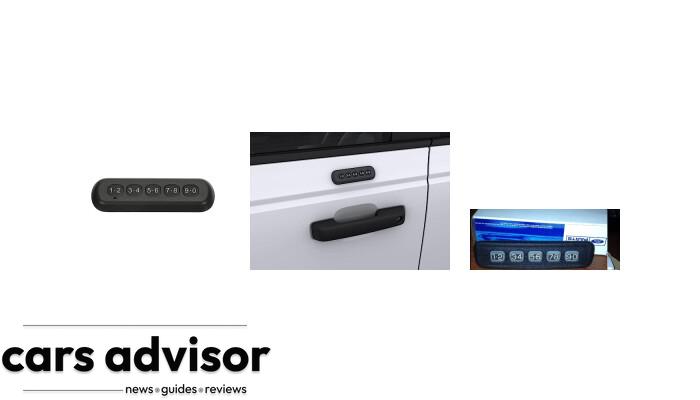
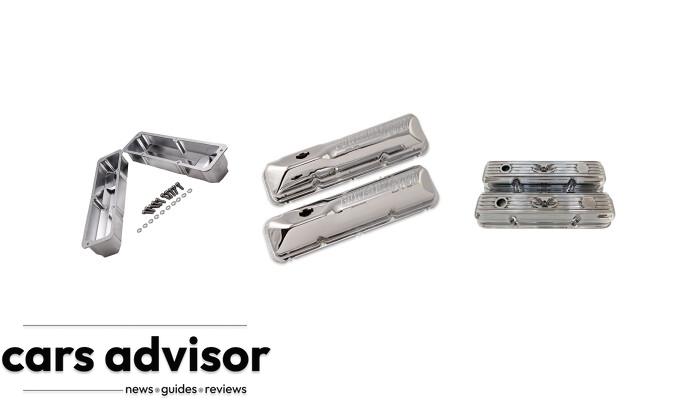



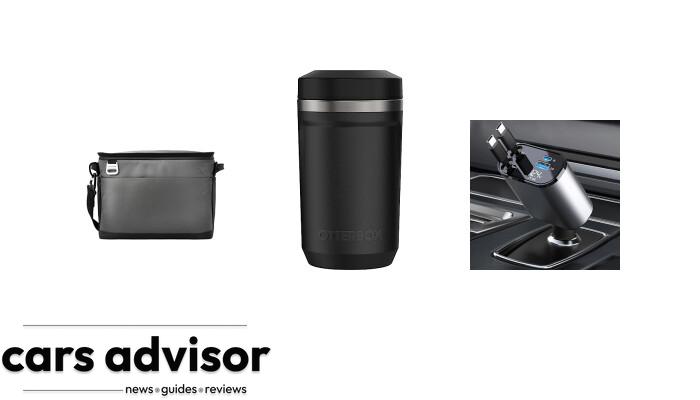


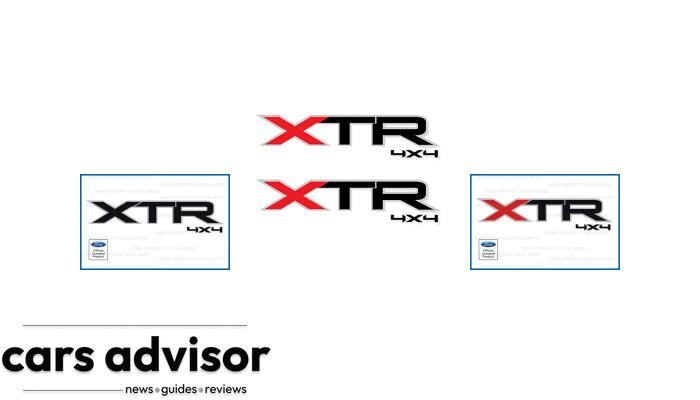


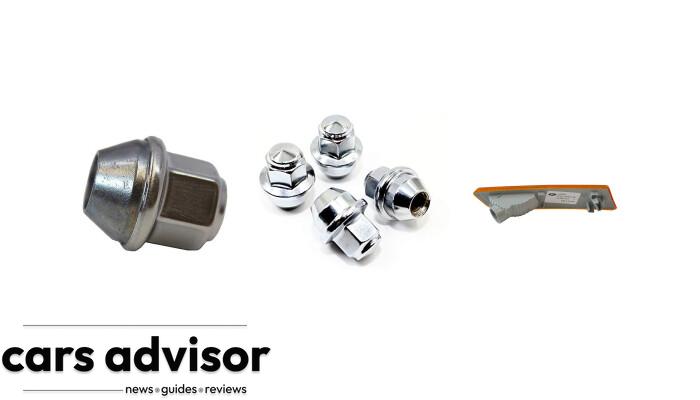

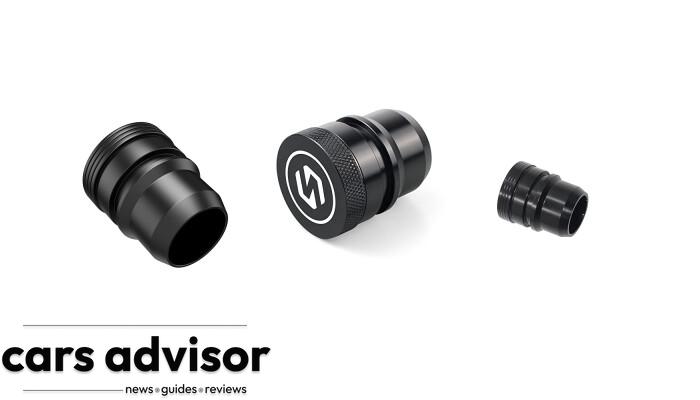
Wow, superb weblog structure! How lengthy have you been running a blog for?
you made running a blog glance easy. The entire look of
your website is fantastic, as smartly as the content material!
You can see similar here sklep internetowy